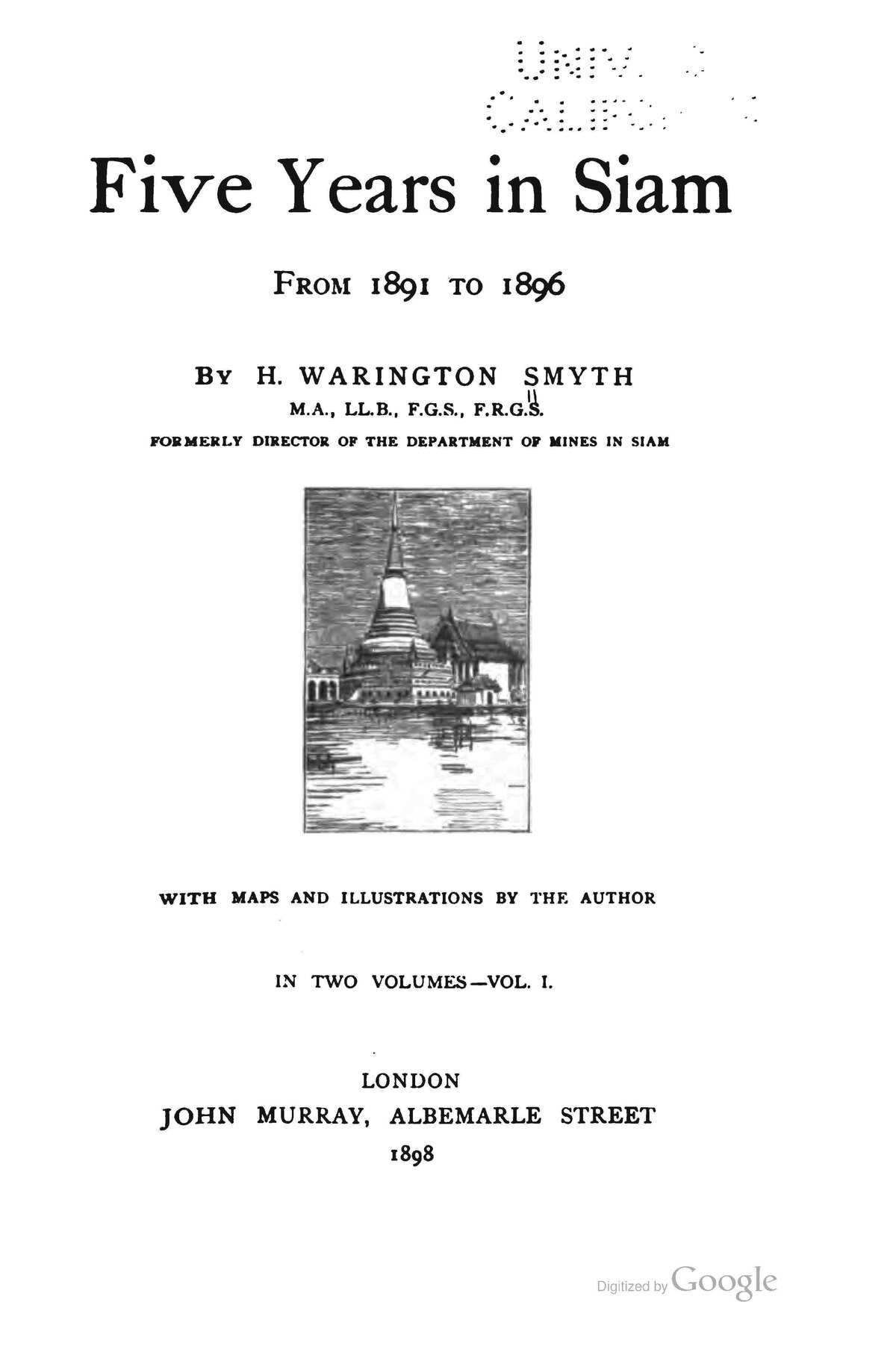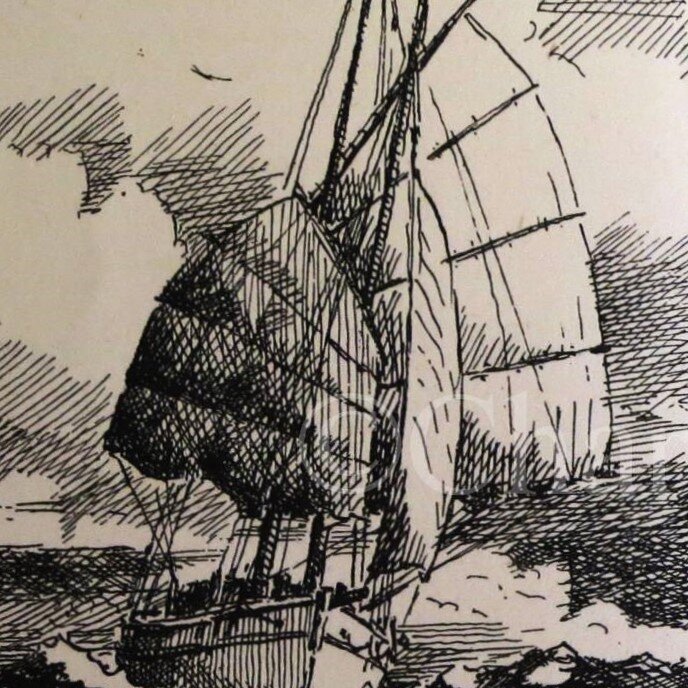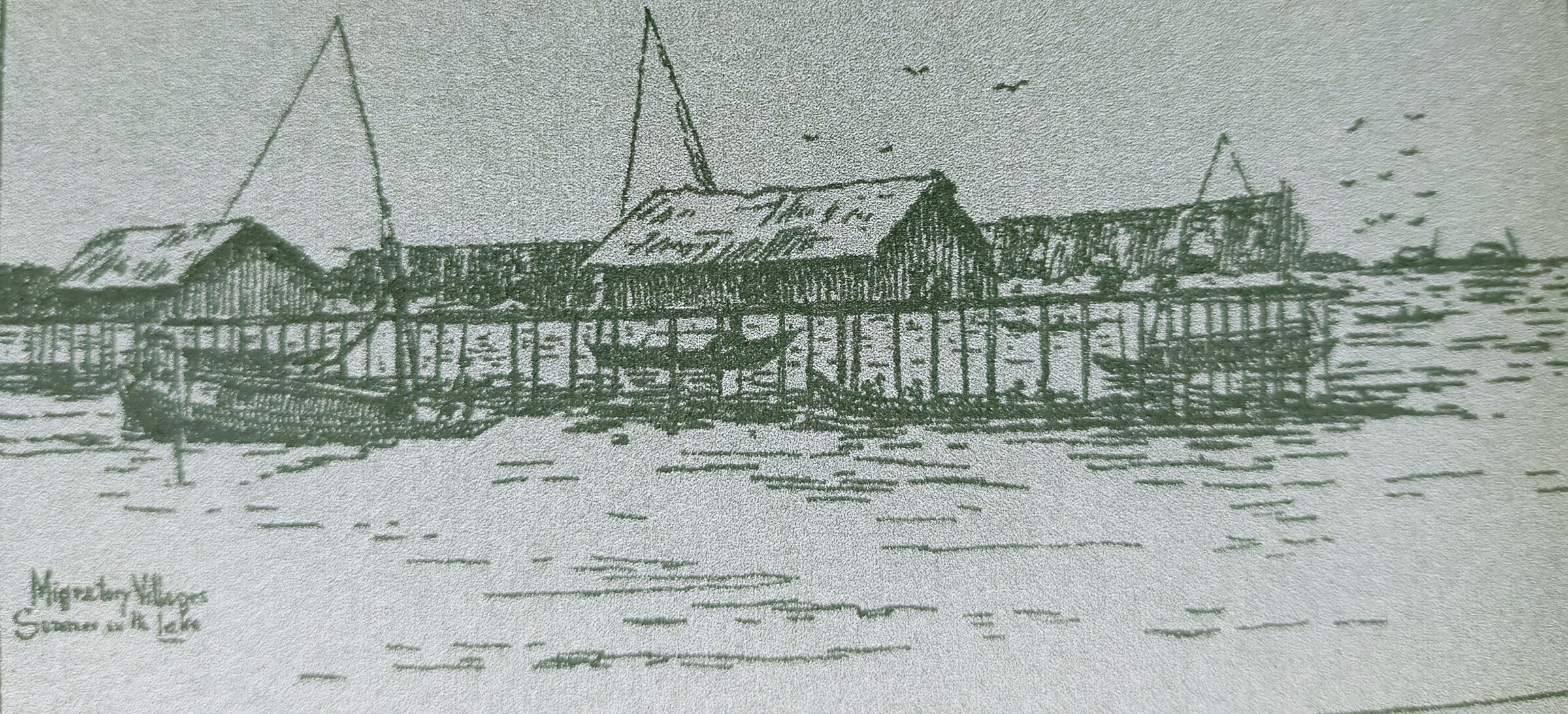Five Years in Siam, From 1891 to 1896, Vol II
by Herbert Warington Smyth
Second volume of a remarkable account of the Siamese, Cambodian and Laotian societies, geographical surveys and mining explorations.

- Format
- paperback
- Publisher
- John Murray, London. Vol I.
- Edition
- Elibron Classics Facsimile, Adamant Media Corporation, Monee, IL., USA, 2005
- Published
- 1898
- Author
- Herbert Warington Smyth
- Pages
- 337
- ISBN
- 054399418X
- Language
- English
A British mining inspector, the author extensively prospected the underground resources of the Malay Peninsula, South Siam and Cambodia, in particular in the Battambang area.
While the first volume had focused on Laos and Siam — he obviously got much information from Prince Damrong (then Minister of Education, and later of Interior), who contrary to other Siamese intellectuals was ready to acknowledge the importance of the Khmer legacy –, these chapters gave us interesting insights on Angkor under the Siamese rule, the Tonle Sap, and the development of international trade and exports at the turn of the century.
- The rude French visitors of Angkor: ‘[A considerable amount of pilgrims from Korat] complained bitterly about the treatment they received at the hands of French visitors coming to the Wat by the lake steamers from Cambodia, of whom seventy or eighty arrive every year. They cut their names all over the ruins, and are surly and domineering to the [resident] monks, demanding little pras, or images, to take away as curios, and cursing and even striking them if they are not satisfied.’ (p 235)
- About the derelict state of the ruins: ‘A kindly brave old [pilgrim] lady broke out on the squatting monks in vehement abuse: “If we Gulas had such a Wat as that to tend, we should not let the bats and jungle deface it as you do. What do you do here? Do you call it making merit sitting and doing nothing?’ (p 236)
- Fauna and fishermen of the Great Lake (Tale Sap): the author observed “monitors, otters, the occasional pelicans, crocodiles [in the swampy forest of the margin of the lake, pied kingfisher and the little Indian kingfisher were common, the little black-billed white heron, pond heron, large white heron, grey and purple heron, cormorant’…‘Then, as the waters rise, the [floating] villages are packed up, the boats seek the river mouths, the birds fly inland, and the dirty oily expanse of water does its duty once more as the safety-valve of the Me Kawng [Mekong]’.(pp 225 – 6)
- Salt fish exports from the Port of Bangkok: the meticulous tables set by the author show many interesting facts regarding the evolution of overseas trade from Bangkok from 1888 to 1896. In particular, while the volume of shipments of teak wood slowly decreased, the commerce of salt fish — including catches from the Tonle Sap — jumped from 4,286 tons in 1890 up to 2,121,145 tons in 1896.
Photo: ‘Migratory Villages, Siamese on the Lake’, drawing by the author (who, as an accomplished yachtsman himself, also draw several types of boats in use in the area, claiming that their built was closer to Egyptian than Greek vessels).
Tags: Siam, Khmer influences, architecture, geography, geology, mining, Mekong River, gold, gems, Indian influences, Mon-Khmer, Tonle Sap, Malay Peninsula, trade
About the Author

Herbert Warington Smyth
Herbert Warington Smyth, “Warington” (4 June 1867 – 19 Dec. 1943, Redruth, UK) was a British traveler, writer, naval officer and mining engineer who served the government of Siam in the 1890s and later held several posts in the Union of South Africa.
Warington went to Siam in 1890 as an unpaid assistant to the Mineral Adviser to the Office of Woods, was Secretary of the Government Department of Mines from 1891 to 1895, and Director General from 1895 to 1897. He was secretary of the Siamese legation from 1898 to 1901.
In his book Five Years in Siam, and especially in his study Exploring for Gemstones on the Upper Mekong — Northern Siam and Parts of Laos in the Years 1892 – 1893 (repub. by White Lotus, Bangkok, 109 p., ISBN 9748434249), he accounted his six-month journey from Bangkok to Luang Prabang and through Nong Khai and Korat, exploring the regions opposite Chiang Khong, on the left bank of the Mekong, for deposits of rubies and sapphires.
Warington had a special interest in the Tonle Sap (which he called “Tale Sap”) for geological and hydrological reasons, and he visited the Siem Reap-Battambang area while “being busy making expeditions in various directions in pursuit of rumoured gold mines”, as he noted.
A dedicated yachtman, he also published in 1906 Mast and Sail in Europe and Asia, and in 1925 Sea-wake and Jungle Trail. He also observed the boat races in Bangkok, noting that the crews were often made of men and women, and the latter, “with their cross sashes of yellow, green or blue, not only looked but also proved the smartest”. He himself illustrated most of his published book with sketches, drawings and maps.

